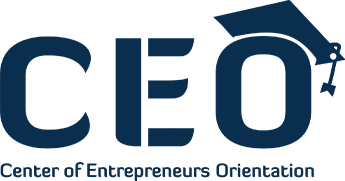Marketing & Sales
Marketing & Sales

Center of entrepreneurship provides entrepreneurs and executives with Courses in Business Administration and Skills, which make them qualified to manage and lead their business and work teams to success.
Read and analyze financial statements
- “Developing participants’ skills on how to prepare financial analysis models for financial reports
- Develop participants’ skills on how to estimate data with financial models
- Perform financial analysis, analyse variances, and extract information from results
- Introduce participants to basic financial statements, their importance and the benefits of each financial statement
- How to analyse and interpret financial statements for the purpose of making management decisions
- Mastering the analysis and presentation of financial statements and the preparation of the estimated budget
- How to make use of the financial statements
- How to plan financially
The role of the internal auditor in risk management
“This course deals with the work of internal control and the role of relevant stakeholders in monitoring, evaluating and implementing best practices in the field of internal control and their impact on auditors in audit planning, performance and transmission. This course seeks to provide participants with the knowledge necessary to understand the internal control environment and the roles and responsibilities of relevant stakeholders. . By applying this knowledge, you will develop the skills to conduct an “”internal control”” risk assessment and implement this in the planning and procedures for engaging external audit. Through this course, participants will develop the following competencies: Monitoring the work of internal control, assessing the effectiveness of internal control, conducting an internal control risk analysis and how to use the internal control assessment to formulate audit procedures.
- “Understanding the internal control environment
- Understand the roles and responsibilities of stakeholders
- Learn techniques for monitoring and evaluating internal controls
- Managing risk and how this affects operational efficiency and effectiveness
- Estimating the impact of the control environment on the external audit
- Formulating a risk-based audit method
Financial analysis of projects
Fixed asset valuation between theory and practice
- “Introducing participants to the concept of fixed assets and modern trends in their management
- Training participants on modern standards in evaluating fixed assets.
- Training participants on the art of financial analysis of fixed assets and its impact on the institution and the use of fixed asset management systems.
- Informing participants of the latest methods and means in classifying fixed assets.
- Informing the participants of the financial reporting standards related to the management of fixed assets.
- Enable participants to review and evaluate fixed assets accurately and efficiently.
- Introduce participants to asset management systems and fixed assets.
- Learn how to re-evaluate the assets and their conditions, and the accounting treatment of the results of the re-evaluation operations, including profits and losses
- Provide the participant with the necessary skills to prepare the budget for projects and assets
- Recognize the method and rules for inventorying assets, determining their fair value, and presenting them in the financial statements in accordance with international standards.
Dialogue skills and the art of persuasion
- “Enhancing the self-confidence building of the participants by improving their mental images of themselves and providing them with the skills of enhancing self-confidence and facing challenges
- Developing the persuasive skills and abilities of the participants by providing them with effective intellectual, linguistic and behavioural models in the field of persuasion and influence
- Develop the participants’ presentation and recitation skills by effectively training them on the four-way model of presentation and presentation
- Overcoming the fear of facing the public through effective techniques for self-development sciences and providing participants with effective strategies in this field
- Introducing participants to the skills of using body language for expression and communication, and developing their skills effectively in this field
- Training in facing situations with the presence of intuition and speed of thinking.
Advanced Negotiation Skills
- “Understand the concept of negotiation, its processes and strategies
- Learn about effective negotiation strategies and models with consultants and contractors
- The ability to practise effective negotiation methods and strategies with consultants and contractors
- Develop personal and managerial skills when dealing with others
- Gain insight into their own strengths and weaknesses as negotiators, and gain personal feedback to improve performance
- Gaining confidence through the ability to plan, implement and deliver effective negotiation outcomes with consultants and contractors
- Develop an understanding of the psychological drivers behind negotiation behaviours and how they can be used to influence others
- Develop effective negotiation skills to reach positive results in various administrative situations.

